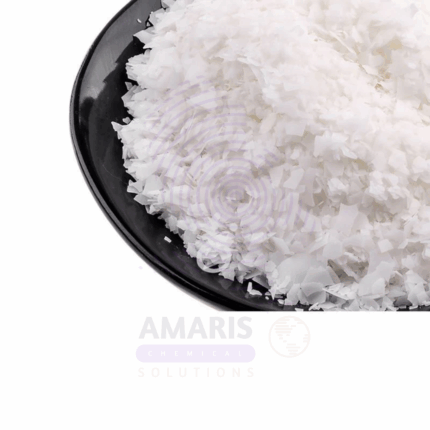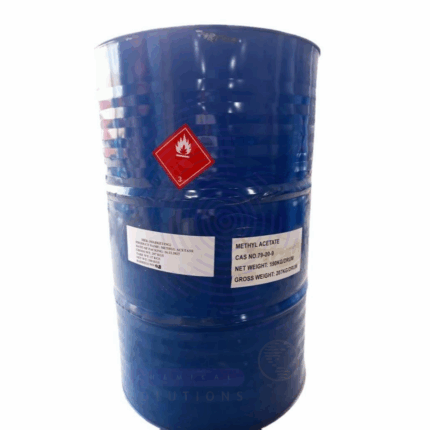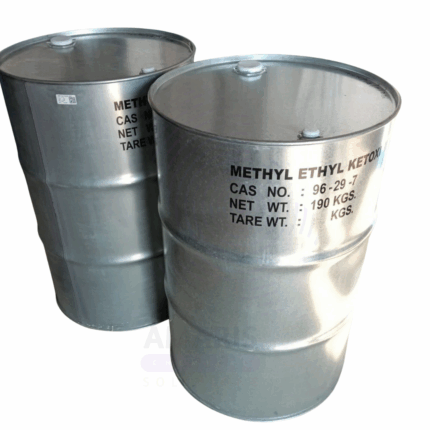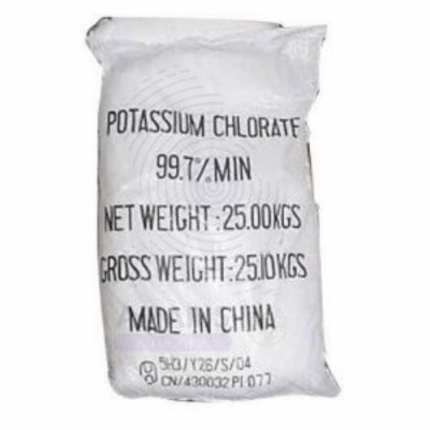

Tanbate
Tanbate is a synthetic tanning agent widely used in the leather industry to produce soft, supple, and durable leather. It is known for its ability to impart good fullness, grain tightness, and enhanced water resistance to leather products. Tanbate improves the physical properties of hides during the tanning process, resulting in high-quality finished leather suitable for footwear, garments, upholstery, and accessories.
Primary Uses (Major Applications)
Leather Industry
Chrome-Free Tanning Agent: Used as an alternative to chrome tanning for producing eco-friendly leather.
Retanning Agent: Enhances softness, fullness, and grain tightness during retanning stages.
Dye Fixation: Improves color fixation and uniformity in leather dyeing.
Water Resistance: Provides improved water repellency and durability to finished leather.
Secondary Uses (Less Common / Niche Applications)
Leather Finishing
Softening Agent: Used in finishing processes to enhance leather softness and flexibility.
Emulsifier: Acts as an emulsifying agent in leather chemical formulations.
Textile Industry
Coating Agent: Occasionally used in textile finishing to improve fabric handle and durability.
Basic Identification Attributes
Chemical Name (IUPAC): Proprietary synthetic tanning agent (specific chemical composition varies)
Common/Trade Name: Tanbate
CAS Number: Not publicly disclosed (varies by manufacturer)
HS Code: 3202.20.00
Synonyms: Synthetic tanning agent, retanning agent
Physical & Chemical Properties
Physical State: Liquid or paste (depending on formulation)
Color & Odor: Light amber to brown; mild characteristic odor
Solubility: Soluble in water
pH: Typically neutral to slightly acidic (5–7)
Safety & Hazard Attributes
GHS Classification: Generally not hazardous; mild skin irritant possible
Toxicity: Low toxicity under normal use conditions
Exposure Limits: No specific limits; follow standard industrial hygiene practices
Storage & Handling Attributes
Storage Conditions: Store in a cool, dry place away from freezing and direct sunlight
Container Type: Plastic drums or containers
Shelf Life: 12–24 months under proper storage conditions
Handling Precautions: Avoid prolonged skin contact; use protective gloves and eyewear
Regulatory & Compliance Attributes
Complies with major chemical safety regulations including REACH and OSHA
Manufactured under Good Manufacturing Practices (GMP)
Meets environmental standards for wastewater and discharge
Environmental & Health Impact
Biodegradability: Biodegradable in wastewater treatment conditions
Ecotoxicity: Low toxicity to aquatic life
Bioaccumulation: Not significant
PPE Required: Gloves and safety goggles recommended
Handling Guidelines: Use in well-ventilated areas; avoid skin and eye contact
Storage Measures: Keep containers sealed and stored upright
First Aid Measures
Inhalation: Move to fresh air if irritation occurs
Skin Contact: Wash affected area with soap and water
Eye Contact: Flush with water for 15 minutes; seek medical attention if irritation persists
Ingestion: Rinse mouth; seek medical advice if necessary
Firefighting Measures
Fire Hazards: Non-flammable but combustible under extreme conditions
Extinguishing Media: Use water spray, foam, or dry chemical extinguishers
Hazardous Combustion Products: Carbon oxides and other combustion gases


 Preservatives(food)
Preservatives(food) Flavor Enhancers
Flavor Enhancers Acidulants
Acidulants Sweeteners
Sweeteners Antioxidants
Antioxidants Colorants(food)
Colorants(food) Nutraceutical Ingredients (food)
Nutraceutical Ingredients (food) Nutrient Supplements
Nutrient Supplements Emulsifiers
Emulsifiers
 Collectors
Collectors Dust Suppressants
Dust Suppressants Explosives and Blasting Agents
Explosives and Blasting Agents Flocculants and Coagulants
Flocculants and Coagulants Frothers
Frothers Leaching Agents
Leaching Agents pH Modifiers
pH Modifiers Precious Metal Extraction Agents
Precious Metal Extraction Agents
 Antioxidants(plastic)
Antioxidants(plastic) Colorants (Pigments, Dyes)
Colorants (Pigments, Dyes) Fillers and Reinforcements
Fillers and Reinforcements Flame Retardants
Flame Retardants Monomers
Monomers Plasticizers
Plasticizers Polymerization Initiators
Polymerization Initiators Stabilizers (UV, Heat)
Stabilizers (UV, Heat)
 Antifoaming Agents
Antifoaming Agents Chelating Agents
Chelating Agents Coagulants and Flocculants
Coagulants and Flocculants Corrosion Inhibitors
Corrosion Inhibitors Disinfectants and Biocides
Disinfectants and Biocides Oxidizing Agents
Oxidizing Agents pH Adjusters
pH Adjusters Scale Inhibitors( water)
Scale Inhibitors( water)
 Antioxidants(cosmetic)
Antioxidants(cosmetic) Emollients
Emollients Fragrances and Essential Oils
Fragrances and Essential Oils Humectants
Humectants Preservatives
Preservatives Surfactants(cosmetic)
Surfactants(cosmetic) Thickeners
Thickeners UV Filters
UV Filters
 Fertilizers
Fertilizers Soil Conditioners
Soil Conditioners Plant Growth Regulators
Plant Growth Regulators Animal Feed Additives
Animal Feed Additives Biostimulants
Biostimulants Pesticides (Herbicides, Insecticides, Fungicides)
Pesticides (Herbicides, Insecticides, Fungicides)
 Active Pharmaceutical Ingredients (APIs)
Active Pharmaceutical Ingredients (APIs) Excipients
Excipients Solvents(pharmaceutical)
Solvents(pharmaceutical) Antibiotics
Antibiotics Antiseptics and Disinfectants
Antiseptics and Disinfectants Vaccine Adjuvants
Vaccine Adjuvants Nutraceutical Ingredients (pharmaceutical)
Nutraceutical Ingredients (pharmaceutical) Analgesics & Antipyretics
Analgesics & Antipyretics
 Analytical Reagents
Analytical Reagents Solvents(lab)
Solvents(lab) Chromatography Chemicals
Chromatography Chemicals Spectroscopy Reagents
Spectroscopy Reagents microbiology-and-cell-culture-reagents
microbiology-and-cell-culture-reagents Molecular Biology Reagents
Molecular Biology Reagents Biochemical Reagents
Biochemical Reagents Inorganic and Organic Standards
Inorganic and Organic Standards Laboratory Safety Chemicals
Laboratory Safety Chemicals Specialty Laboratory Chemicals(Special Laboratory Equipment)
Specialty Laboratory Chemicals(Special Laboratory Equipment)
 Demulsifiers
Demulsifiers Hydraulic Fracturing Fluids
Hydraulic Fracturing Fluids Scale Inhibitors(oil)
Scale Inhibitors(oil) Surfactants(oil)
Surfactants(oil) Drilling Fluids
Drilling Fluids
 Dyes and Pigments
Dyes and Pigments Bleaching Agents
Bleaching Agents Softening Agents
Softening Agents Finishing Agents
Finishing Agents Antistatic Agents
Antistatic Agents
 Admixtures
Admixtures Waterproofing Agents
Waterproofing Agents Sealants and Adhesives
Sealants and Adhesives Curing Compounds
Curing Compounds Concrete Repair Chemicals
Concrete Repair Chemicals Anti-Corrosion Coatings
Anti-Corrosion Coatings
 Surfactants(cleaning)
Surfactants(cleaning) Builders
Builders Enzymes
Enzymes Solvents (Cleaning)
Solvents (Cleaning) Fragrances
Fragrances
 Electronic Chemicals
Electronic Chemicals Catalysts
Catalysts Lubricants
Lubricants Photographic Chemicals
Photographic Chemicals Refrigerants
Refrigerants Automotive chemicals
Automotive chemicals Pyrotechnic Chemicals
Pyrotechnic Chemicals
 Biodegradable Surfactants
Biodegradable Surfactants Bio-based Solvents
Bio-based Solvents Renewable Polymers
Renewable Polymers Carbon Capture Chemicals
Carbon Capture Chemicals Wastewater Treatment Chemicals
Wastewater Treatment Chemicals
 Pigments
Pigments Solvents(paint)
Solvents(paint) Specialty Coatings
Specialty Coatings Binders/Resins
Binders/Resins Additives
Additives Driers
Driers Anti-Corrosion Agents
Anti-Corrosion Agents Functional Coatings
Functional Coatings Application-Specific Coatings
Application-Specific Coatings
 Fresh Herbs
Fresh Herbs Ground Spices
Ground Spices Whole Spices
Whole Spices Spice Blends
Spice Blends Dried Herbs
Dried Herbs
 Leavening Agents
Leavening Agents Dough Conditioners
Dough Conditioners Flour Treatments
Flour Treatments Fat Replacers
Fat Replacers Decoratives
Decoratives Preservatives(baking)
Preservatives(baking)
 Plasticizers & Softeners
Plasticizers & Softeners Reinforcing Agents
Reinforcing Agents Adhesion Promoters
Adhesion Promoters Vulcanizing Agents
Vulcanizing Agents Antidegradants
Antidegradants Blowing Agents
Blowing Agents Fillers & Extenders
Fillers & Extenders Accelerators & Retarders
Accelerators & Retarders






















